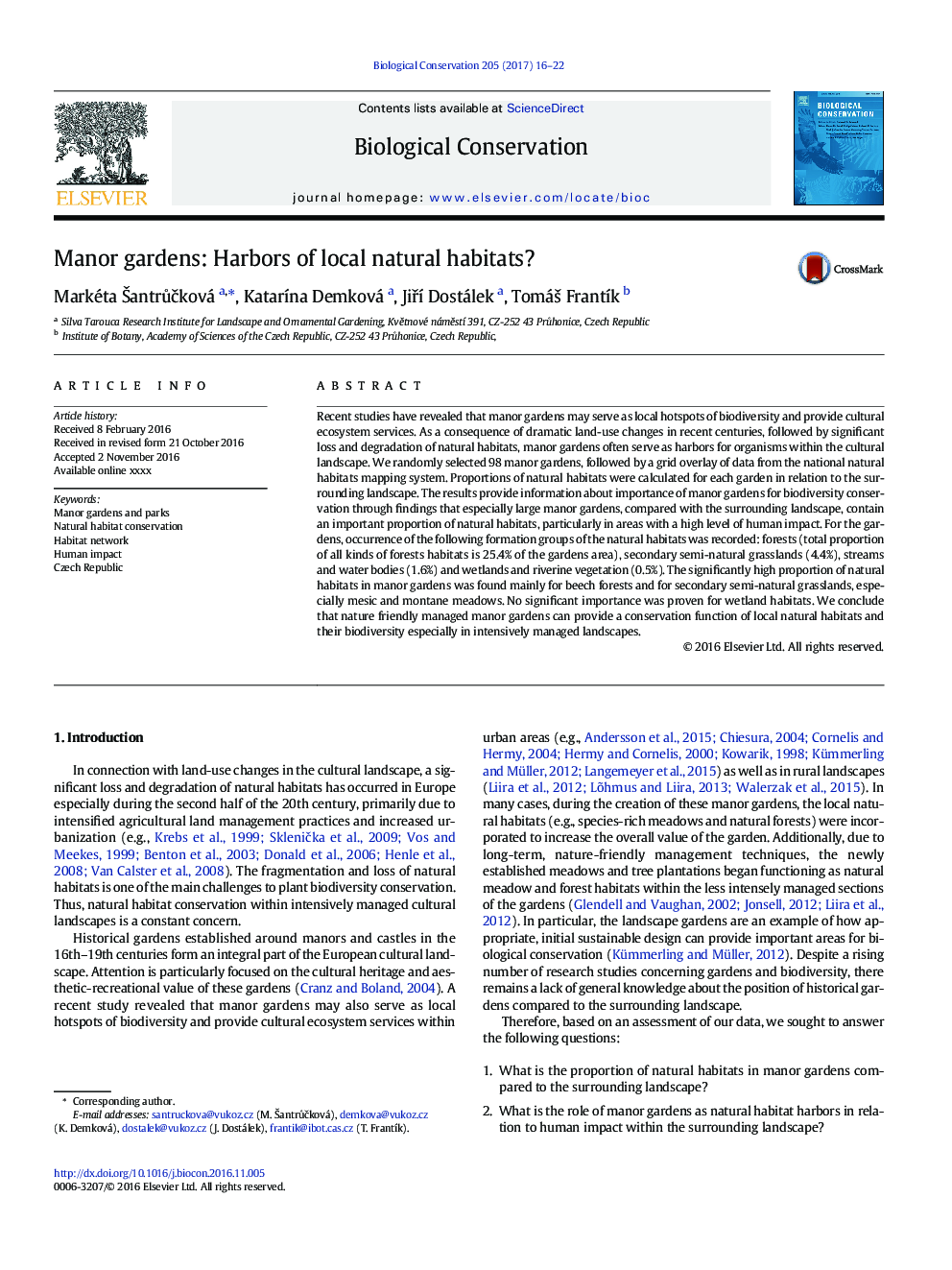| Article ID | Journal | Published Year | Pages | File Type |
|---|---|---|---|---|
| 5743245 | Biological Conservation | 2017 | 7 Pages |
Abstract
Recent studies have revealed that manor gardens may serve as local hotspots of biodiversity and provide cultural ecosystem services. As a consequence of dramatic land-use changes in recent centuries, followed by significant loss and degradation of natural habitats, manor gardens often serve as harbors for organisms within the cultural landscape. We randomly selected 98 manor gardens, followed by a grid overlay of data from the national natural habitats mapping system. Proportions of natural habitats were calculated for each garden in relation to the surrounding landscape. The results provide information about importance of manor gardens for biodiversity conservation through findings that especially large manor gardens, compared with the surrounding landscape, contain an important proportion of natural habitats, particularly in areas with a high level of human impact. For the gardens, occurrence of the following formation groups of the natural habitats was recorded: forests (total proportion of all kinds of forests habitats is 25.4% of the gardens area), secondary semi-natural grasslands (4.4%), streams and water bodies (1.6%) and wetlands and riverine vegetation (0.5%). The significantly high proportion of natural habitats in manor gardens was found mainly for beech forests and for secondary semi-natural grasslands, especially mesic and montane meadows. No significant importance was proven for wetland habitats. We conclude that nature friendly managed manor gardens can provide a conservation function of local natural habitats and their biodiversity especially in intensively managed landscapes.
Related Topics
Life Sciences
Agricultural and Biological Sciences
Ecology, Evolution, Behavior and Systematics
Authors
Markéta Å antrůÄková, KatarÃna Demková, JiÅà Dostálek, TomáÅ¡ FrantÃk,
